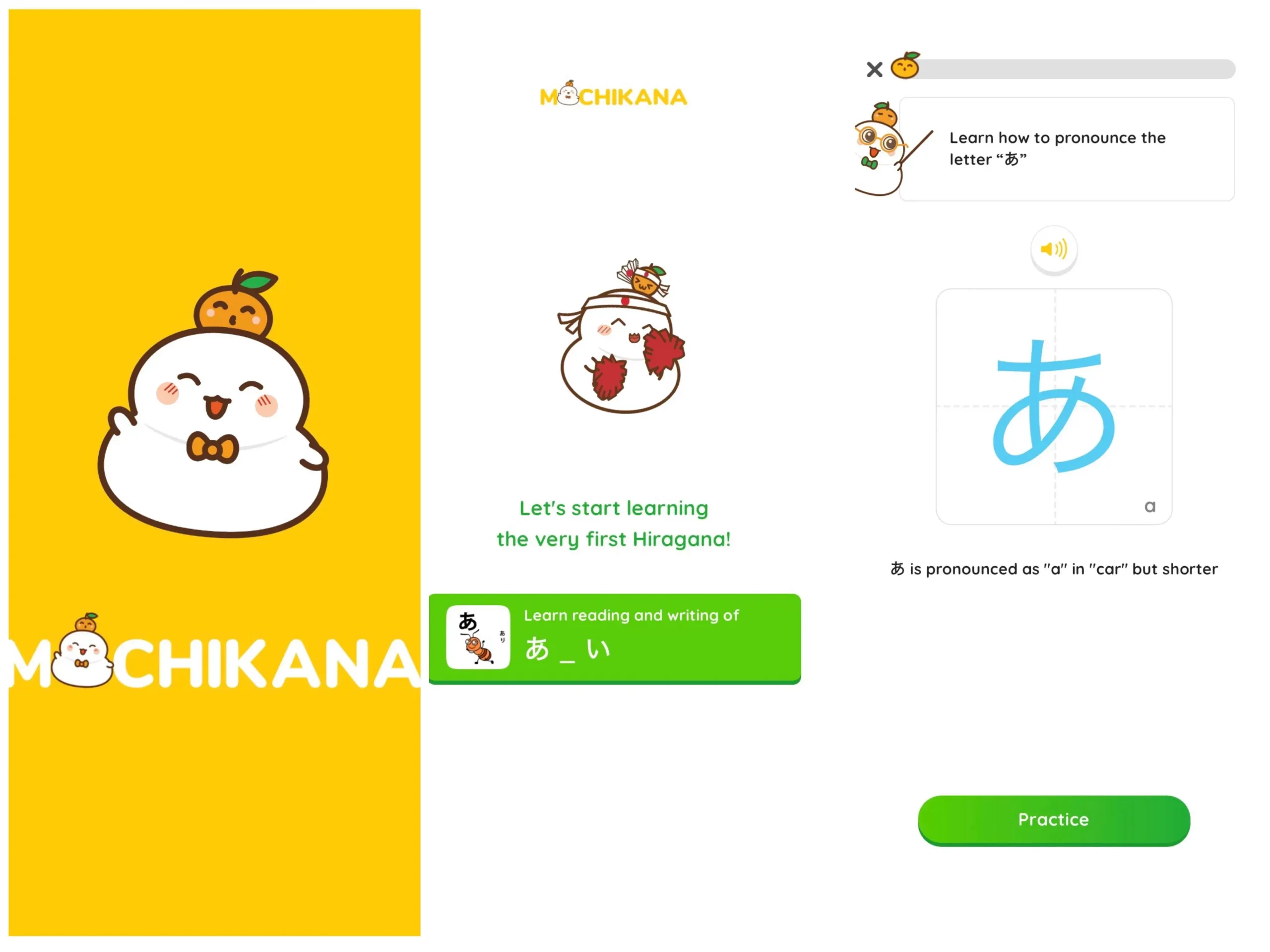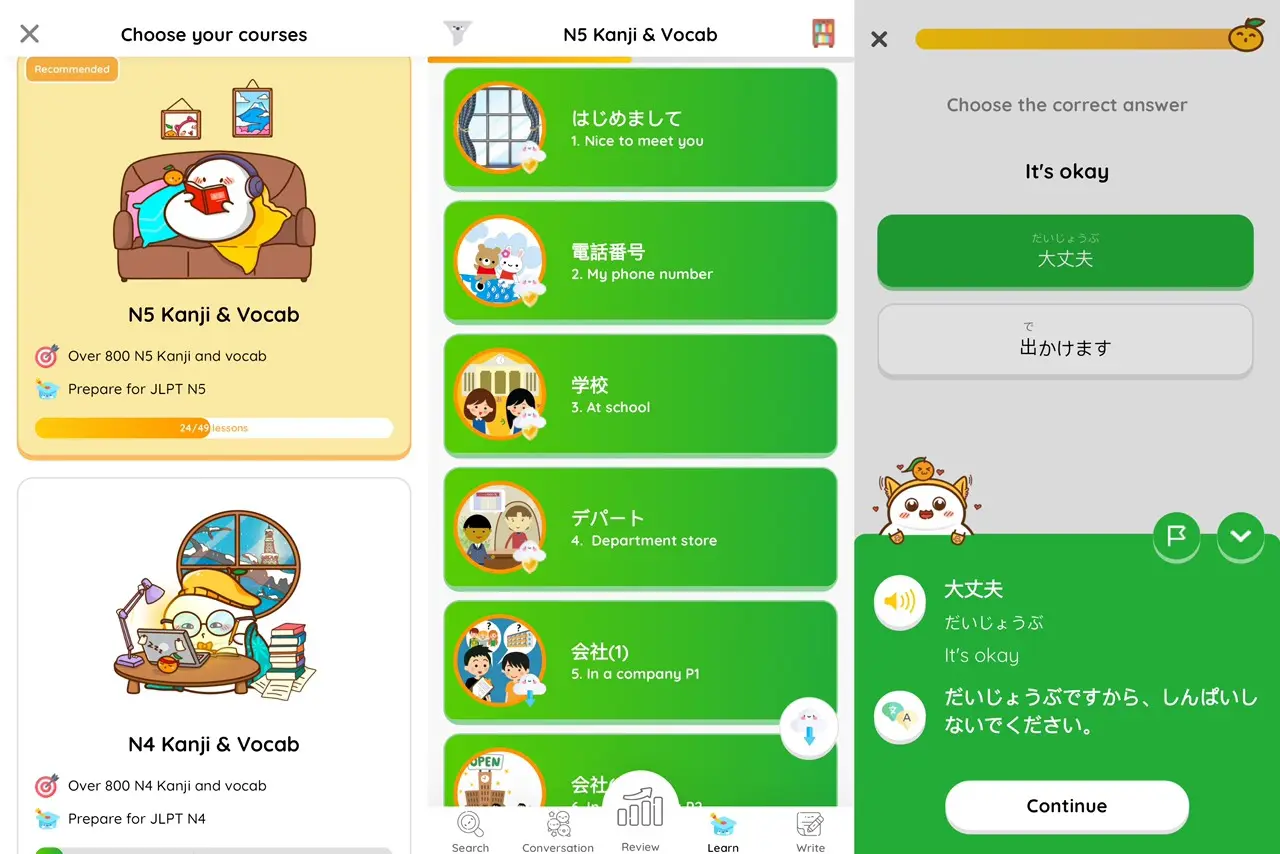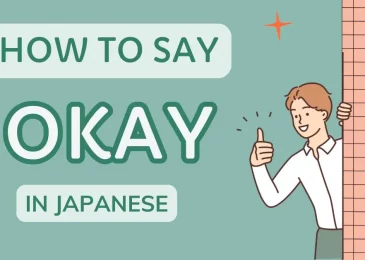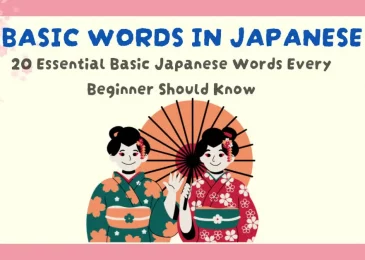What is the best app to learn Japanese? Learning Japanese has never been easier with the rise of innovative language apps. Whether you’re a beginner mastering Hiragana and Katakana or an advanced learner tackling Kanji and conversational fluency, the right apps can make a significant difference. This post will round up the best apps to help you achieve your language goals.
- Why Learn Japanese Through Apps?
- The Best App to Learn Japanese as a beginner
- Best App to learn Japanese conversation
- How to Choose the Right App?
- Tips for Maximizing Your App-Based Learning
- Conclusion
Why Learn Japanese Through Apps?
Language learning apps offer a modern, flexible, and interactive study method. Here are some reasons why apps are a great option:
- Convenience: Learn anywhere, anytime, whether commuting, relaxing at home, or on the go.
- Personalized Learning: Many apps adapt to your pace and track your progress.
- Engagement: Gamified learning keeps you motivated and entertained.
- Cost-Effective: High-quality apps often cost less than traditional classes.
The Best App to Learn Japanese as a beginner
Best app to learn Hiragana and Katakana
MochiKana is an exceptional app crafted specifically to help beginners confidently learn Hiragana and Katakana, the two foundational writing systems of the Japanese language. These scripts are essential for reading, writing, and understanding basic Japanese. MochiKana’s intuitive design, engaging features, and gamified approach make it one of the most effective tools available for mastering Kana.
Key Features:
• Spaced Repetition System (SRS): The app uses SRS technology to ensure you retain what you’ve learned by strategically reviewing characters at optimal intervals. This minimizes forgetting and solidifies your memory.
• Interactive Tracing Practice: The app provides guided tracing exercises to help you develop accurate handwriting skills. Each character comes with stroke order animations, which are critical for writing Japanese correctly.
• Audio Pronunciation: Every Kana character includes audio to help you practice pronunciation and connect sounds to visuals.
• Gamified Lessons: Learning Kana can sometimes feel repetitive, but MochiKana turns it into a fun and rewarding experience with mini-games, achievements, and progress tracking.
• Customizable Learning Paths: Whether you’re learning at your own pace or preparing for a test, MochiKana lets you tailor your study sessions to fit your needs.
Why Use MochiKana?
MochiKana excels at simplifying the process of learning Kana through bite-sized lessons and interactive exercises. The app breaks down the writing systems into manageable steps, reinforcing them with consistent practice and clear audio guidance.
For instance:
• Characters that are visually or phonetically similar, like さ (sa) and ち (chi), are grouped to help learners distinguish them effectively.
• Flashcards combine characters with example words, contextualizing your learning.
This app is especially beneficial for complete beginners, as it makes the overwhelming task of memorizing over 100 Kana characters feel approachable and enjoyable. For students preparing for the Japanese Language Proficiency Test (JLPT) or anyone looking to read Japanese signs, menus, or labels, MochiKana is the perfect starting point.
Best app to learn Japanese vocabulary and Kanji
Kanji is often considered the most daunting aspect of learning Japanese. With over 2,000 commonly used characters in everyday Japanese, it’s easy for learners to feel intimidated. This is where MochiKanji shines, turning a challenging task into a structured and manageable process. Designed for intermediate and advanced learners, MochiKanji is your ultimate tool for mastering Kanji and expanding your vocabulary.
Key Features:
• Creative Flashcards: MochiKanji uses a flashcard-based system with spaced repetition to help learners effectively retain and recall Kanji. It tracks progress and organizes Kanji by themes, providing a structured and efficient learning experience without relying on mnemonic devices.
• SRS for Efficient Reviews: The app employs Spaced Repetition to review Kanji at the perfect time—just before you’re about to forget it. This ensures long-term retention and reduces the need for rote memorization.
• Real-World Vocabulary Integration: MochiKanji doesn’t just teach individual Kanji characters; it combines them with related vocabulary and example sentences to give you context. For instance, the Kanji for “water” (水) is taught alongside words like 水道 (suidou, water supply) or 飲み水 (nomimizu, drinking water).
• Conversation Mode: One unique feature of MochiKanji is its ability to integrate Kanji practice into conversational exercises. This helps learners see how Kanji is used in everyday dialogue, bridging the gap between theory and real-world application.
• Kanji Stroke Practice: Writing Kanji is a crucial skill, and MochiKanji offers interactive stroke order guides to ensure you learn to write each character correctly.
Why Use MochiKanji?
MochiKanji goes beyond teaching characters—it builds a comprehensive understanding of Kanji in practical contexts. It focuses on the JLPT Kanji lists, starting with frequently used characters, so you prioritize what matters most.
For instance:
• Focus on Radicals: The app helps you break Kanji into smaller, recognizable parts called radicals. By learning these building blocks, you can understand even complex characters more easily.
• Cumulative Learning: MochiKanji reinforces what you’ve already learned by incorporating past characters into new lessons, ensuring nothing is forgotten as you progress.
• Practical Examples: You’ll encounter Kanji in sentences used in everyday life, helping you understand how to use the characters naturally. For example, when learning 食 (shoku, eat), you might see phrases like 食べ物 (tabemono, food) or 外食 (gaishoku, dining out).
MochiKanji is perfect for learners aiming to pass higher levels of the JLPT (N3-N1), improve reading skills, or gain confidence in understanding Japanese texts like newspapers, novels, and advertisements. It’s also invaluable for professionals planning to work in Japan, as Kanji fluency is essential in business settings.
Duolingo: Fun and Interactive Learning
Duolingo remains one of the most popular language apps for a reason. Its bite-sized lessons and gamified structure appeal to casual learners.
Key Features:
• Beginner-friendly lessons covering vocabulary and grammar.
• A competitive streak with streaks, leaderboards, and rewards.
• Interactive speaking exercises.
• Limitations: While Duolingo is a great starting point, it lacks depth for advanced learners, especially in Kanji and conversational Japanese.
Best App to learn Japanese conversation
HelloTalk: Connect with Native Speakers
For conversational practice, HelloTalk is unmatched. It connects you with native Japanese speakers for real-time language exchange.
• Key Features:
• Text, voice, and video chat options.
• Built-in translation and pronunciation guides.
• A supportive community of learners and teachers.
• Why It Stands Out: Real-world practice is crucial for fluency, and HelloTalk provides an authentic conversational experience.
How to Choose the Right App?
When selecting the best app to learn Japanese, the key lies in aligning the app’s strengths with your current level and learning objectives. Each app caters to specific skills—whether it’s mastering Kana, Kanji, grammar, or speaking. Here’s a practical approach to help you choose wisely:
For Beginners: Build a Strong Foundation
If you’re new to Japanese, start with apps that help you establish a strong grasp of Hiragana and Katakana as well as basic vocabulary.
• MochiKana:
MochiKana stands out as the go-to app for mastering Kana. Its SRS-based learning ensures you remember each character effectively, while gamified lessons keep you engaged. It’s perfect for beginners who want to establish a solid reading foundation.
Pro Tip: Combine MochiKana with daily handwriting practice to build muscle memory for both Hiragana and Katakana.
For Intermediate Learners: Expand Grammar and Vocabulary
Intermediate learners often find themselves looking for more structured grammar lessons and contextual vocabulary. Apps that combine these elements with practice opportunities are ideal.
• MochiKanji:
While designed for Kanji, MochiKanji also introduces you to contextual vocabulary through real-life examples. This feature is particularly useful for building a working vocabulary for daily use. Additionally, the app’s progressive difficulty levels ensure you’re constantly challenged without feeling overwhelmed.
Pro Tip: Use the app’s example sentences to learn grammar implicitly while studying Kanji. This helps you strengthen your grammar knowledge passively.
For Speaking Practice: Real Conversations
Speaking practice is vital at all stages of language learning. Engaging with native speakers through language exchange platforms not only builds fluency but also gives you insight into cultural nuances.
• MochiKanji Conversation Mode:
The Conversation Mode in MochiKanji is a great tool for reinforcing Kanji use in everyday dialogue. It bridges the gap between studying Kanji and applying it in real-world settings, helping you gain confidence in speaking while simultaneously improving reading comprehension.
Pro Tip: Use this mode alongside a language exchange app to test out phrases and vocabulary in live conversations.
• HelloTalk or Tandem:
Pair your study apps with a conversation platform like HelloTalk. You can practice greetings, phrases, and grammar structures learned in other apps, while getting feedback directly from native speakers.
The Right Combination for All Levels
To maximize your progress, consider these tailored combinations:
• Beginners: Start with MochiKana to master Kana and layer it with a conversational app like Duolingo for practice.
• Intermediate Learners: Combine MochiKanji with grammar-focused apps like LingoDeer for a comprehensive approach.
• Advanced Learners: Use MochiKanji alongside HelloTalk for real-world application of advanced vocabulary and Kanji.
Choosing an app that matches your goals and proficiency level’ll ensure your Japanese learning journey is effective and enjoyable.
Tips for Maximizing Your App-Based Learning
1. Set Clear Goals: Decide whether you want to focus on speaking, writing, or overall fluency.
2. Stay Consistent: Dedicate at least 20–30 minutes daily to learning.
3. Combine Apps: Use multiple apps to cover different aspects of the language, like grammar, vocabulary, and speaking.
4. Engage in Real-Life Practice: Complement app learning with cultural immersion, such as watching Japanese media or attending local events.
Conclusion
It is the perfect time to start your Japanese learning journey, thanks to the abundance of incredible apps at your disposal. From beginners to advanced learners, there’s an app for everyone. MochiKana and MochiKanji lead the way with their innovative features and user-friendly designs, but combining them with other tools like HelloTalk and Duolingo can provide a well-rounded learning experience.
So, download your favorite app, set your goals, and immerse yourself in the beauty of the Japanese language. Happy learning!







